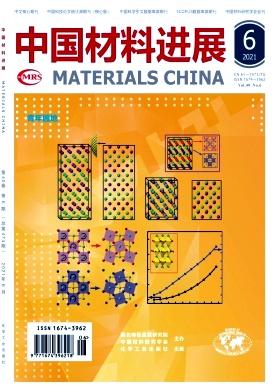求助PDF
{"title":"In-Situ SEM and EBSD Analysis on Plastic Behavior of Laser Beam Welding Ti-6Al-4V Alloy [激光焊接Ti-6Al-4V钛合金塑性行为的原位SEM/EBSD分析]","authors":"N. Dang, L. Liu, C. Lavogiez, E. Maire, C. Ma, L. Zhou","doi":"10.7502/J.ISSN.1674-3962.2019.03.10","DOIUrl":null,"url":null,"abstract":"EBSD and in-situ SEM were used to study the plastic behavior of laser beam welding Ti-6Al-4V. Due to the high weld temperature(exceeding the β-transus) and high cooling rate, β→α' martensitic transformation occurs. Within the fusion zone, only acicular morphology exists, while in 1st heat affected zone(HAZ) and 2nd HAZ, these acicular laths globalize, which show an obvious microstructural gradient. The result of the in-situ plastic deformation shows the deformation can be divided into 2 stages. In the first stage of the deformation, either slipping or twinning can occur. It depends on whether the initial orientation can respect //TA(tensile axis) by rotating the grains or not. While in the second stage, only slipping can be found. © 2019, The Editorial Board of Materials China. All right reserved.","PeriodicalId":53495,"journal":{"name":"中国材料进展","volume":"38 1","pages":"279-285"},"PeriodicalIF":0.0000,"publicationDate":"2019-01-01","publicationTypes":"Journal Article","fieldsOfStudy":null,"isOpenAccess":false,"openAccessPdf":"","citationCount":"0","resultStr":"{\"title\":\"In-Situ SEM and EBSD Analysis on Plastic Behavior of Laser Beam Welding Ti-6Al-4V Alloy [激光焊接Ti-6Al-4V钛合金塑性行为的原位SEM/EBSD分析]\",\"authors\":\"N. Dang, L. Liu, C. Lavogiez, E. Maire, C. Ma, L. Zhou\",\"doi\":\"10.7502/J.ISSN.1674-3962.2019.03.10\",\"DOIUrl\":null,\"url\":null,\"abstract\":\"EBSD and in-situ SEM were used to study the plastic behavior of laser beam welding Ti-6Al-4V. Due to the high weld temperature(exceeding the β-transus) and high cooling rate, β→α' martensitic transformation occurs. Within the fusion zone, only acicular morphology exists, while in 1st heat affected zone(HAZ) and 2nd HAZ, these acicular laths globalize, which show an obvious microstructural gradient. The result of the in-situ plastic deformation shows the deformation can be divided into 2 stages. In the first stage of the deformation, either slipping or twinning can occur. It depends on whether the initial orientation can respect //TA(tensile axis) by rotating the grains or not. While in the second stage, only slipping can be found. © 2019, The Editorial Board of Materials China. All right reserved.\",\"PeriodicalId\":53495,\"journal\":{\"name\":\"中国材料进展\",\"volume\":\"38 1\",\"pages\":\"279-285\"},\"PeriodicalIF\":0.0000,\"publicationDate\":\"2019-01-01\",\"publicationTypes\":\"Journal Article\",\"fieldsOfStudy\":null,\"isOpenAccess\":false,\"openAccessPdf\":\"\",\"citationCount\":\"0\",\"resultStr\":null,\"platform\":\"Semanticscholar\",\"paperid\":null,\"PeriodicalName\":\"中国材料进展\",\"FirstCategoryId\":\"1087\",\"ListUrlMain\":\"https://doi.org/10.7502/J.ISSN.1674-3962.2019.03.10\",\"RegionNum\":0,\"RegionCategory\":null,\"ArticlePicture\":[],\"TitleCN\":null,\"AbstractTextCN\":null,\"PMCID\":null,\"EPubDate\":\"\",\"PubModel\":\"\",\"JCR\":\"Q3\",\"JCRName\":\"Energy\",\"Score\":null,\"Total\":0}","platform":"Semanticscholar","paperid":null,"PeriodicalName":"中国材料进展","FirstCategoryId":"1087","ListUrlMain":"https://doi.org/10.7502/J.ISSN.1674-3962.2019.03.10","RegionNum":0,"RegionCategory":null,"ArticlePicture":[],"TitleCN":null,"AbstractTextCN":null,"PMCID":null,"EPubDate":"","PubModel":"","JCR":"Q3","JCRName":"Energy","Score":null,"Total":0}
引用次数: 0
引用
批量引用
In-Situ SEM and EBSD Analysis on Plastic Behavior of Laser Beam Welding Ti-6Al-4V Alloy [激光焊接Ti-6Al-4V钛合金塑性行为的原位SEM/EBSD分析]
EBSD and in-situ SEM were used to study the plastic behavior of laser beam welding Ti-6Al-4V. Due to the high weld temperature(exceeding the β-transus) and high cooling rate, β→α' martensitic transformation occurs. Within the fusion zone, only acicular morphology exists, while in 1st heat affected zone(HAZ) and 2nd HAZ, these acicular laths globalize, which show an obvious microstructural gradient. The result of the in-situ plastic deformation shows the deformation can be divided into 2 stages. In the first stage of the deformation, either slipping or twinning can occur. It depends on whether the initial orientation can respect //TA(tensile axis) by rotating the grains or not. While in the second stage, only slipping can be found. © 2019, The Editorial Board of Materials China. All right reserved.


